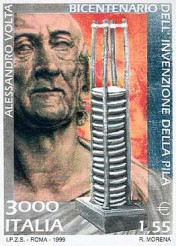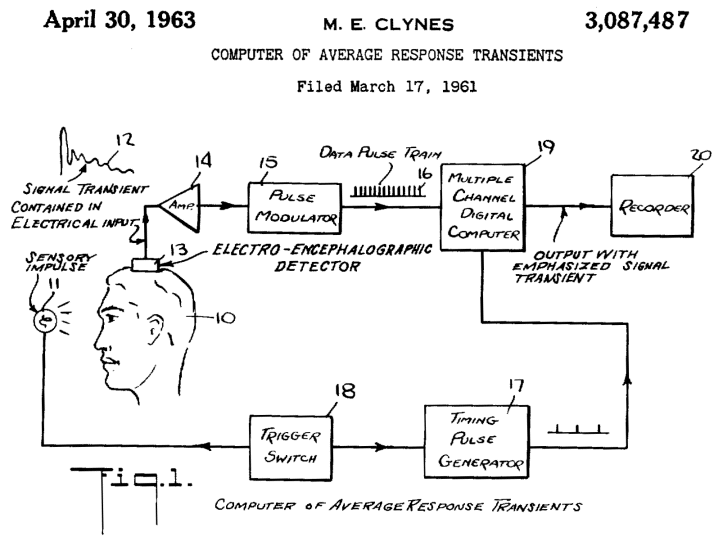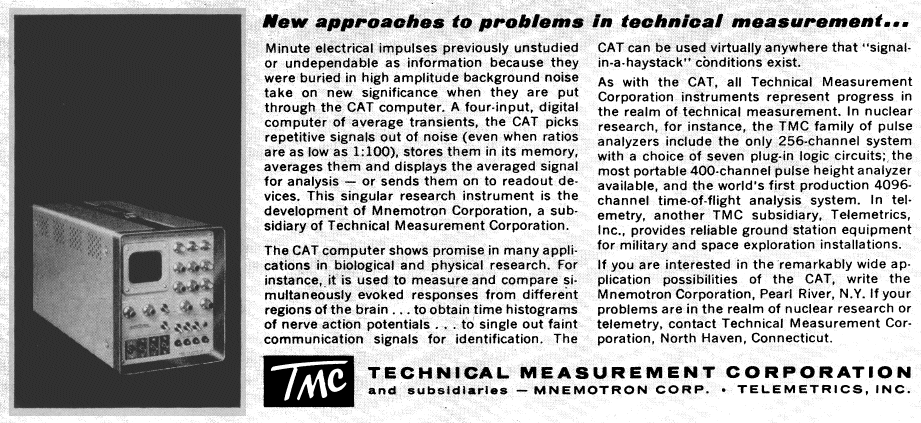The story of the Mnemotron
The beginning of electrophysiology
 The
Age of Enlightenment was in full cry in Italy in 1783 when Luigi Galvani discovered a way to
use electricity to reanimate a dead frog. After some experiments and some thought, Luigi
concluded that the electricity came from the frog. His associate, Alessandro Volta,
built the first voltaic battery to prove to Galvani that you don't need a frog to make
electricity. Together they proved there was a deep connection between electricity and
living things. The battery in your cell phone is just an improved version of Volta's
invention.
The
Age of Enlightenment was in full cry in Italy in 1783 when Luigi Galvani discovered a way to
use electricity to reanimate a dead frog. After some experiments and some thought, Luigi
concluded that the electricity came from the frog. His associate, Alessandro Volta,
built the first voltaic battery to prove to Galvani that you don't need a frog to make
electricity. Together they proved there was a deep connection between electricity and
living things. The battery in your cell phone is just an improved version of Volta's
invention.
 It seemed possible, at the beginning of the 19th century, to understand how the
brain could cause a muscle to twitch. Scientific instruments that could sense and
measure the weak electrical signals were needed. The electrical signal from a beating
heart was strong enough to be detected by a 19th century galvanometer. The heart does
only one thing and it produces a simple and easy to understand electrical signal. The
electrical signals from the brain are much weaker. They were detected in the 1930s using
vacuum tube technology. The brain does many things simultaneously and so it produces
very complicated electrical signals. What was needed was a way to make
some sense of the mess.
It seemed possible, at the beginning of the 19th century, to understand how the
brain could cause a muscle to twitch. Scientific instruments that could sense and
measure the weak electrical signals were needed. The electrical signal from a beating
heart was strong enough to be detected by a 19th century galvanometer. The heart does
only one thing and it produces a simple and easy to understand electrical signal. The
electrical signals from the brain are much weaker. They were detected in the 1930s using
vacuum tube technology. The brain does many things simultaneously and so it produces
very complicated electrical signals. What was needed was a way to make
some sense of the mess.
The Mnemotron
Making sense of the mess was the problem that Manfred Clynes set out to solve in 1961. The Mnemotron was the first computer-like instrument that could separate signal from noise by mathematical means. He named it after Mnemosyne, the Greek goddess of memory. Here is a drawing from the Mnemotron patent application. The complete patent may be viewed here.

This is how it works. The man sees a flash of light. The brain response is detected and converted to a pulse train. The number of pulses in the train corresponds to the amplitude of the brain's response. The number is added to a memory location determined by the amount of time since the flash occurred. Brain responses resulting from the light flash are added together in memory. This is done repeatedly. Other brain activity is unconnected to the light flashes and appears random and noiselike. This is the noise that confounds efforts to understand how the brain is responding to the light flash. But this noise adds or subtracts with equal probability. After 100 flashes, the numbers that describe the brain's response to the flash are 100 times greater. The noise grows in memory too, but only as the square root of the number of light flashes. After 100 light flashes, the signal to noise ratio (SNR) is 10 times better. After 1,000 flashes, the SNR is 31 times better. Eventually, you will see the brain's signal from the light flash. You will never go to Las Vegas once you understand this.
The schematic refers to a "multiple channel digital computer." That means a 400 word magnetic core memory. Each word could store a 5 decimal digit number. The Mnemotron was a decimal machine. In some ways, it was a computer. But it had only one instruction, add and store.
The Mnemotron was a general purpose SNR improving machine. It found many applications. The Mnemotron Corporation was founded to manufacture and market the Mnemotron. Technical Measurements Corporation (TMC) was founded at about the same time to take advantage of the many vistas opened by magnetic core memory. TMC sold a pulse height analyzer and a time of flight analyzer. Eventually, Mnemotron became a subsidiary of TMC. TMC was very successful and its products were sold all over the world. Here is an ad from May 1962. The Mnemotron became a CAT but it never became a CAT scanner.

Manfred Clynes
Manfred Clynes sold Mnemotron to TMC for TMC stock. He sold his TMC stock and thus he made a fortune by age 37. He had a mansion on the Hudson River with 5 acres of park-like grounds. There was even a real pipe organ in the living room.
"Gifted" is an inadequate word to describe Clynes. He is more like a room full of geniuses. As a scientist he could reach the leading edge of almost any subject in a few months. He actually did it in engineering, physiology and computer programming. He is also a highly respected concert pianist. He toured Europe playing Bach's Goldberg Variations in 1953. The tour ended at London's Royal Festival Hall. It seems as if music is his true passion and his TMC success made it possible for him to pursue music fully. See Wikipedia's biography here. Clynes is still alive and engaged. Learn about his computer program called "Superconductor" here. Be sure to listen to the MIDI files processed by Superconductor.
The implosion of TMC
TMC went bankrupt in 1967. Apparently TMC had orders but could not fill them because the banks would lend no more money. TMC stock became worthless and TMC employees were on the street. Several of them ended up in Madison, Wisconsin, working for Nicolet Instrument Corporation.